Master the melodic solo techniques of guitar's masters
We profile the melody-laden tricks of Beck, May, Gilmour and more

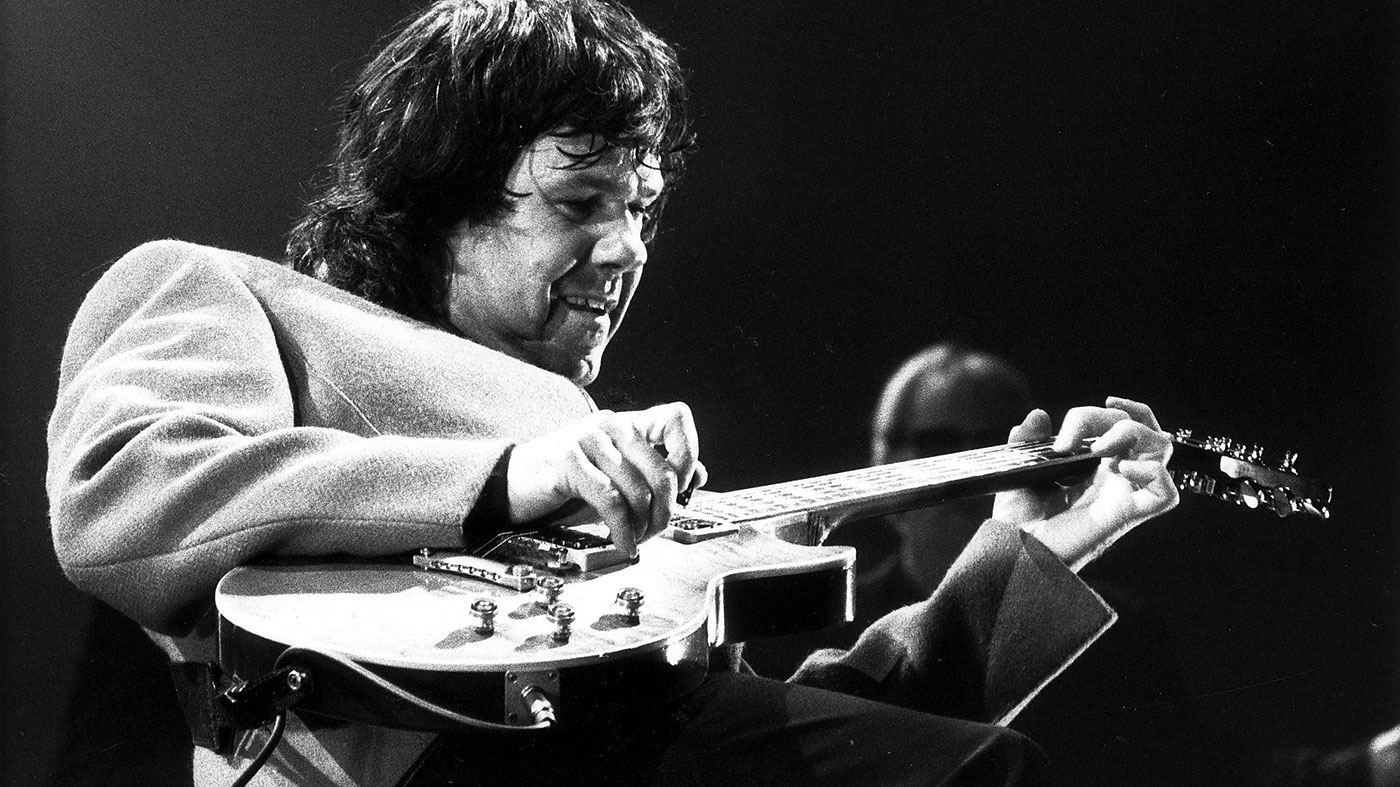
How experimenting with your fingering can improve your guitar solos
Guitar solos. We all want to play them, right? And we probably all wish we were better players too. Yet, exactly what makes a better player and soloist is highly debatable.
Should you shred, or do you aim for something simpler? Do you opt for familiar pentatonic scales, or would something more tuneful be better suited to the music?
We’ve produced a selection of lessons that will help you write more melodic solos and develop your feel. By taking a look at the styles of some of rock’s finest feel players we’ll help you take a more thoughtful and tuneful approach to your solos.
1. Brian May
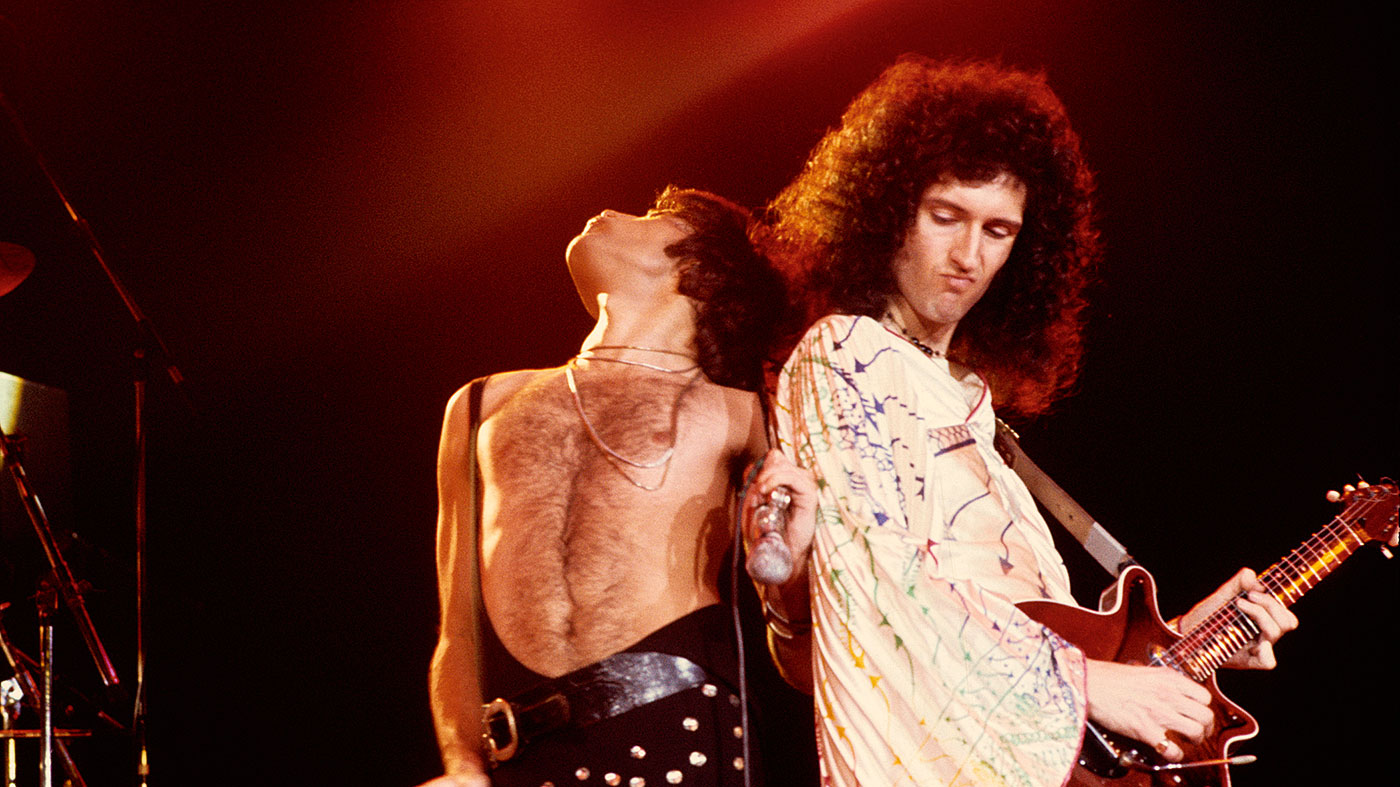
Start your journey to tasteful, tuneful soloing with a look at the signature style of Queen great, Brian May
Famed for playing his own home-designed and built guitar, it’s perhaps unsurprising Brian May’s tone seems to be so hard to reproduce. Tonal challenges aside, any player can learn from Brian’s style.
Pre-bends are one of his secret weapons. Bending up to pitch before you pick may not sound remarkable, but it allows you to add vibrato below the pitch of the note you’re playing - not possible with a standard fretted note, where vibrato raises the pitch. Brian's virtuosity allows him to play long, winding scale runs. We’re looking at both of these aspects of his guitar style here.

Scale runs
Get the MusicRadar Newsletter
Want all the hottest music and gear news, reviews, deals, features and more, direct to your inbox? Sign up here.
Our first lick is inspired by Queen classics like Bohemian Rhapsody and Bicycle Race - tracks that feature long, winding scale runs. You’ll need to learn some scale shapes to take the idea further, but this lick will get you started. It’ll also help you improve your finger dexterity and you’ll develop your ear too.

Get expressive with pre-bends
Brian May’s playing can be incredibly emotive, as you can hear in tracks like Who Wants to Live Forever, These Are The Days Of Our Lives or Bijou. Try using pre-bends to recreate Brian’s magic. All you have to do is bend up to the note shown in brackets before you pick the string. The PB marking tells you which fret to place your finger on.
2. Slash

Guns N’ Roses’ Les Paul-toting lick-meister knows a thing or two about melodic soloing
Guns N’ Roses shook up the 80s LA rock scene with their 1987 debut Appetite For Destruction. With its raw punky vibe, the album stuck two fingers up to the overproduced sound of some of the band’s contemporaries. And at the core of the band was Slash - the Les Paul-wielding, JD-sipping wild man, who, despite indulging in the excesses of rock ’n’ roll, always brought serious guitar chops to the party.
Where the rhythm section was aggressive and funky, Slash brought a loose swagger with his solos, yet somehow it would all fit together into this album. If you’re looking at Slash’s more melodic style you’ll need to focus on his string bend technique and his note choice.
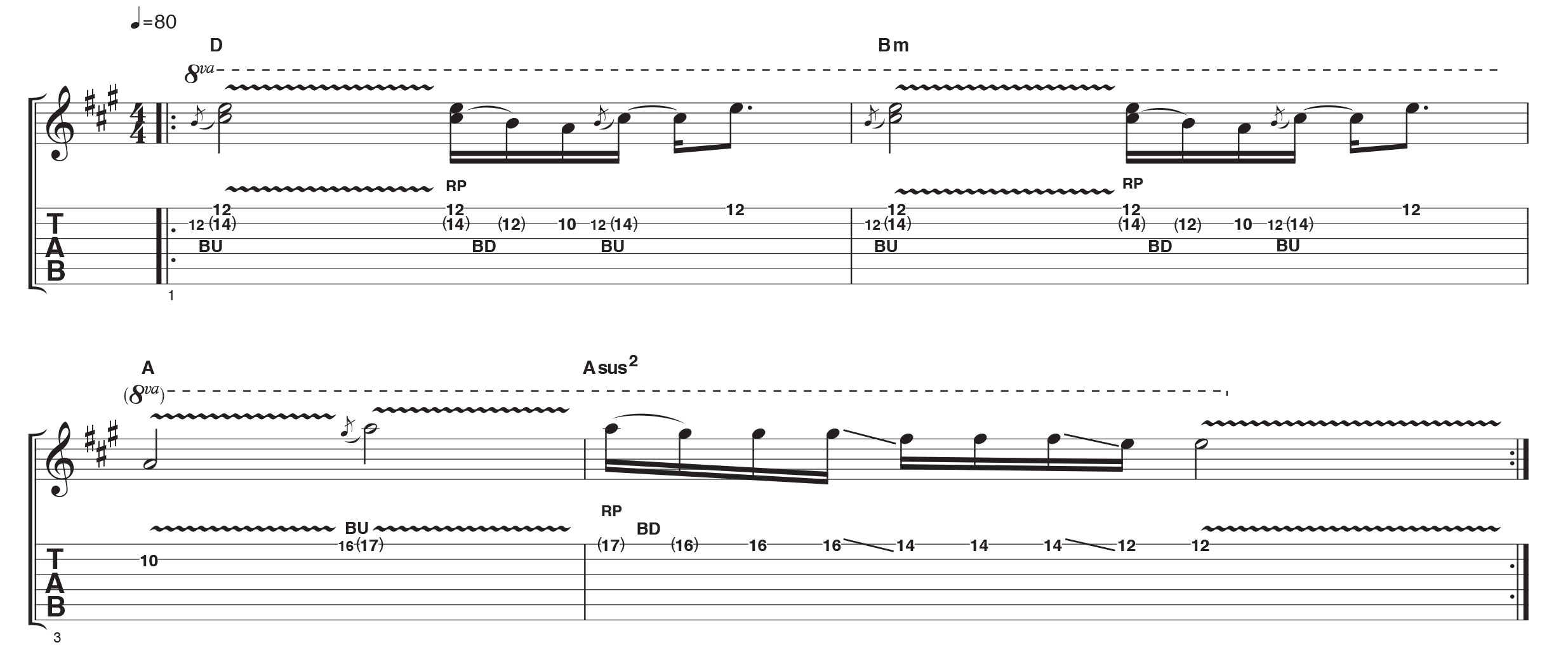
Drawn-out string bends
Slash’s soloing in tracks like Sweet Child O’ Mine and November Rain is full of memorable melodies and rousing bends. Our lick features a doublestop at the 12th fret played with the third and fourth fingers. Pick the notes together, then bend the second string. Take your time, allowing the notes to fight one another until you reach the peak of the bend.

Using notes from backing chords
The solo in Knocking On Heaven’s Door has an epic, melodic sound, thanks to Slash closely following the chords. The idea is that instead of selecting a scale and letting your fingers choose where to go, you’ll achieve more musical results by playing notes from the chords. Our lick is in A major, but the chord tones give the lick more shape.
3. BB King
Try your hand at the simple lead lines and blues soul of the undisputed king of the blues, BB King
‘Less is more’ is at the heart of the BB King philosophy. With a style based heavily in just the major and minor pentatonic scales, and armed only with his Gibson ‘Lucille’ ES-335, the man known to most as the ‘king of the blues’ was one of the most expressive players of all time.
The secret to getting so much from so little is BB’s use of dynamics and phrasing. At its most basic, dynamics refers to how loud you play - and BB’s picking would vary greatly between loud and soft. There are other nuances to consider. Staccato lines can really punch out of a mix and BB’s signature vibrato is key to his style.

Blues Q&A
This lick uses only four different notes, but is structured in a ‘question and answer’ format to create a musically satisfying result. Bars 1 and 2 are the ‘question’, which sets up your ear for the responses in bars 3 and 4. Try it out in blues, rock and jazz, and experiment any time you’re improvising a solo.

Vibrato and staccato
This lick, reminiscent of The Thrill Is Gone, brings simple phrases to life with nuances, such as staccato and vibrato. Staccato means you cut the note short; vibrato is a wobble. BB’s vibrato is quick with not too much pitch bend. Use a turning motion from the wrist to make the note ‘flutter’ and take your thumb off the neck if you need more freedom.
4. Jeff Beck

Master the pitch bend magic of the quintessential guitarist’s guitarist
In the '80s, Jeff Beck would make a change in his playing, which would give him his own unique sound - an instantly recognisable calling card. By ditching his pick and opting to play little else other than a Fender Strat, the guitar hero’s guitar hero forged his own style.
Mixing fingerstyle, whammy bar-tinged melodies, a sprinkling of harmonics, an already impressive legato technique and, for the final touch, volume swells, Beck creates some of the most expressive sounds. We’re focusing on his whammy bar phrasing. Dial in an overdrive tone with plenty of sustain and make sure to play fingerstyle.

Whammy bar note changes
This lick shows Beck’s whammy technique in the hard-rock setting of tracks like Hammerhead. Push down on your bar so each bend is a tone below the fretted note. To get the bends to sound in tune you will need to practise a few times slowly and listen intently to the pitch bend until your muscle memory and your ear match up.

Fretting and whammy bar together
This lick is at the ballad end of the spectrum and brings to mind tracks like Where Were You. The melody uses a mixture of standard fretted notes and whammy bar pitch bends. The effect should be a seamless, smooth melody so make your movements smooth and natural. One way of doing this is to hold the bar loosely in your hand throughout.
5. David Gilmour

Surely the godfather of melodic lead guitar playing, everyone can learn something from the solos of Pink Floyd legend David Gilmour
Perhaps more than any other player, David Gilmour is the epitome of the lead guitarist who plays melodically and ‘for the song’. Though primarily a player with blues sensibilities, Pink Floyd’s progressive nature would see the younger Gilmour become an experimenter both sonically and melodically.
Listen to Floyd’s recorded output, particularly from 1973’s Dark Side Of The Moon, nary a note is misplaced, every note counts and every phrase has a purpose. And, though none of us has Gilmour’s musical ear, we can all learn from the way he approaches playing the guitar and writing songs.
From his signature double bends to his note choice and phrasing there’s plenty in our lesson for you to try out.

Blues phrasing and double bends
This E minor pentatonic (E G A B D) lick is inspired by Gilmour’s Another Brick In The Wall, (Part 2) solo, so we’re opening with a blues-based lick - the kind that might be at home on an Albert King or Chuck Berry tune. This sets up the more idiosyncratic double bend, which is a Gilmour trademark. Simply bend up two frets, then, again, another two frets.
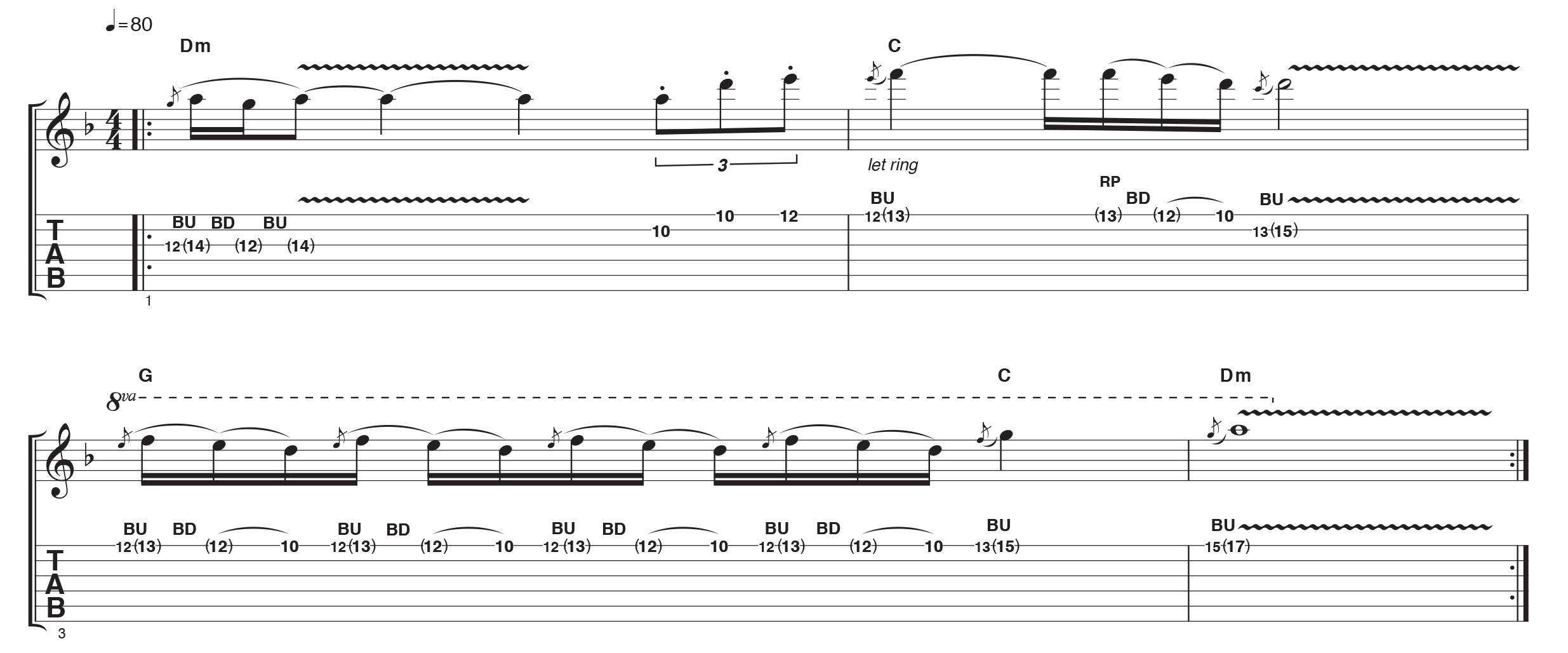
Epic soloing
This lick represents the epic side of Gilmour’s playing, as heard on tracks like Comfortably Numb. A mix of fluid string bends and longer held notes gives our lick its uplifting vibe. Notice that the pattern in bar 3 is a three-note phrase, which goes against the four-note structure of the 16th notes - an effective way of building tension in your solos.

Repetition and rhythm
As with lick 2, this lick features rhythmic phrasing as a tool to build drama and tension. Here, there’s a 12/8 groove, which has a triplet structure, but the melody has a repeating four-note pattern, before reverting back to a more regular arrangement in bar 2. Try it in your own improvs - even repeating ideas can give creative results.

Sliding
David also plays slide guitar, as you can hear in tracks like High Hopes. And, though he often opts for a lap steel guitar, you can use your own instrument. So why use a slide? The huge amount of sustain means you can really milk longer notes and play drawn-out slides too. Just remember to aim your slide directly over the frets for accurate pitching.
6. Jerry Cantrell

The Gilmour of his generation? We think so! learn the soloing methods of Alice In Chains’ melodic master
Jerry Cantrell is one of the most melodic hard rock players out there and his heartfelt playing elevates Alice In Chains’ brand of alt-metal to an emotional level that few of his contemporaries can match.
You’ll hear some of his most stirring solos on 1994’s stripped-back, acoustic-heavy EP Jar Of Flies and, perhaps inevitably, on Alice In Chain’s dark take on a power ballad, Down In A Hole from 1992’s Dirt. Strong melodies are at the heart of every solo Jerry Cantrell plays, so read on and try these examples and get some of his trademark techniques into your own playing style.
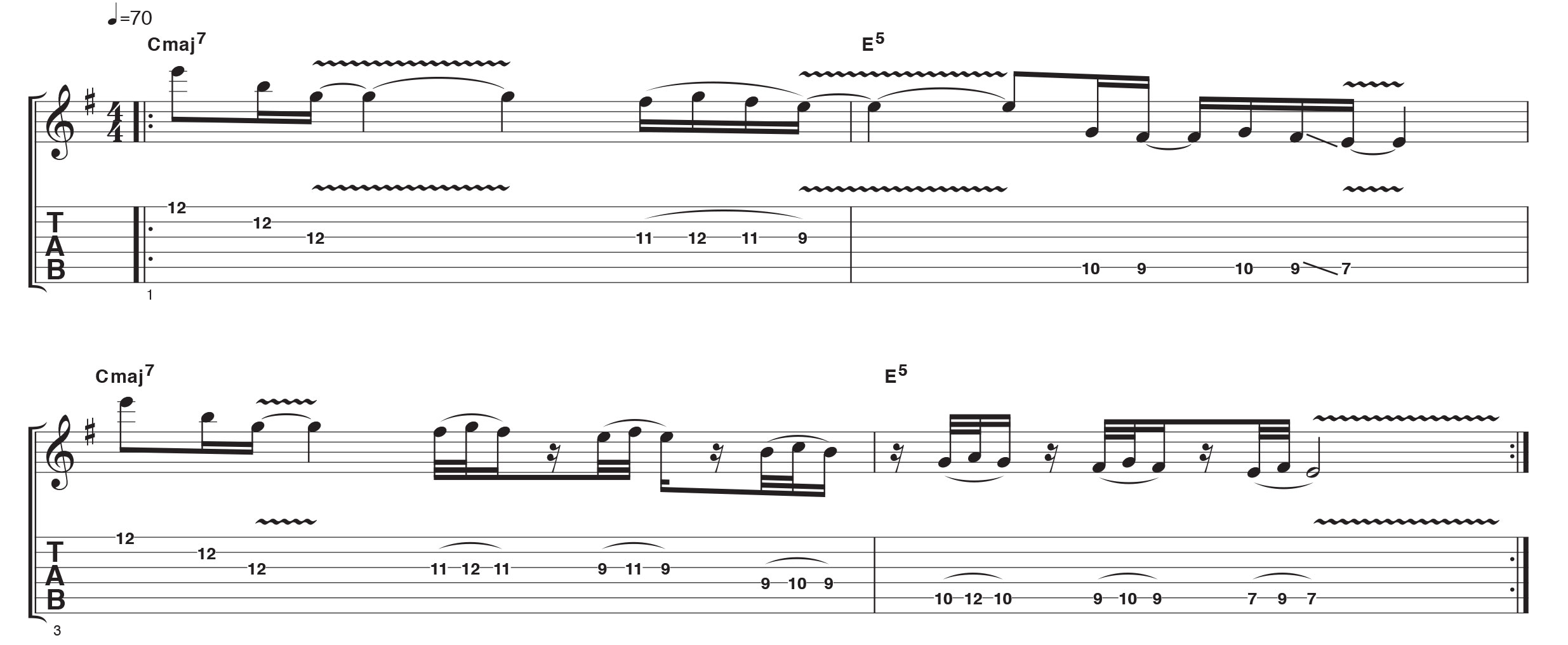
Hop from string to string
This lick is inspired by Jerry’s beautiful playing on Nutshell. The most striking thing here is the use of wide interval skips. Instead of playing up and down through a scale shape, hopping from string to string and skipping over strings can guide your creativity into new directions.

Thick sounding octave shapes
This part uses octave shapes - Jerry used this approach on tracks like Dirt to thicken up the sound. As our melody moves through the D natural minor scale (D E F G A Bb C) it is useful to know where the notes appear along the length of each string. Guitar players tend to practise scales in one fretboard position, so this is a vital skill.
7. Mark Knopfler

Touch, tone and a trademark fingerstyle technique are all part of the Dire Straits guitarist’s melodic style. let’s take a closer look…
if you take only one thing from Mark Knopfler’s playing style it must surely be his fingerstyle technique. Though his pick-hand position might appear unusual, Mark is able to control every nuance of his sumptuous light overdrive tones and Strat cleans with a beautifully sensitive touch.
Fingerstyle offers a number of unique phrasing options too; the ‘thumb, pull-off , thumb, first finger’ picking pattern of that lick in Sultans Of Swing can’t really be played any other way - at least not if you want Mark’s feel.
Take a look at our tab examples for a taster of Mark’s uptempo licks and his more expressive, country-tinged approach.
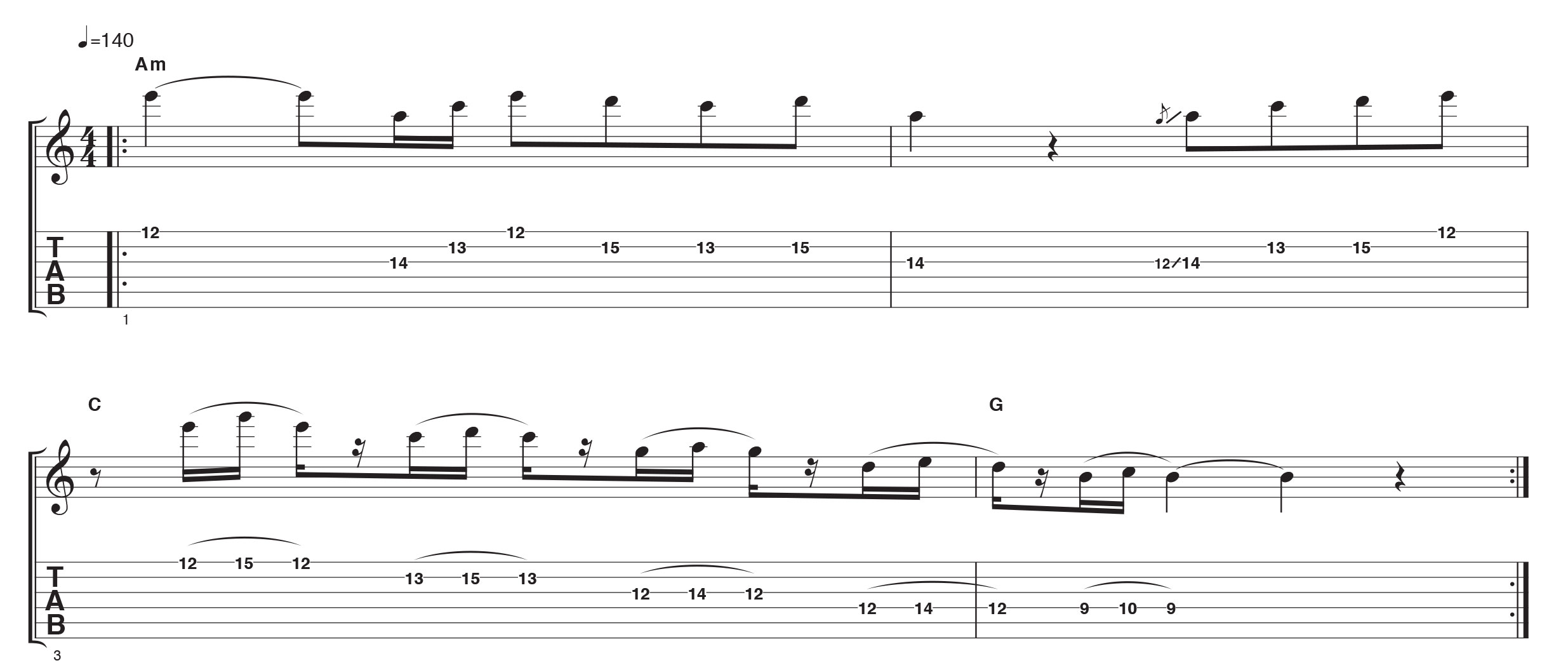
‘Three notes, then rest’ phrasing
Inspired by the incredible solo in Sultans Of Swing, our lick uses some cool Knopfler-style tricks. Following the opening melody, the second half of the lick descends through the A minor pentatonic scale with ‘three notes, then rest’ style phrasing. The broken up feel goes against what you might expect to hear but it sounds great.

Country style bends and diads
Mark is a country-influenced player - listen to Angel Of Mercy or Portobello Belle. He also plays fingerstyle, which opens up many phrasing options. You can play our lick with a pick, but fingerstyle gives you Mark’s feel. The opening bends, the ringing notes in bar 2 and the final diads are typical country fare, but work in Stones-style rock ’n’ roll too.
8. John Mayer
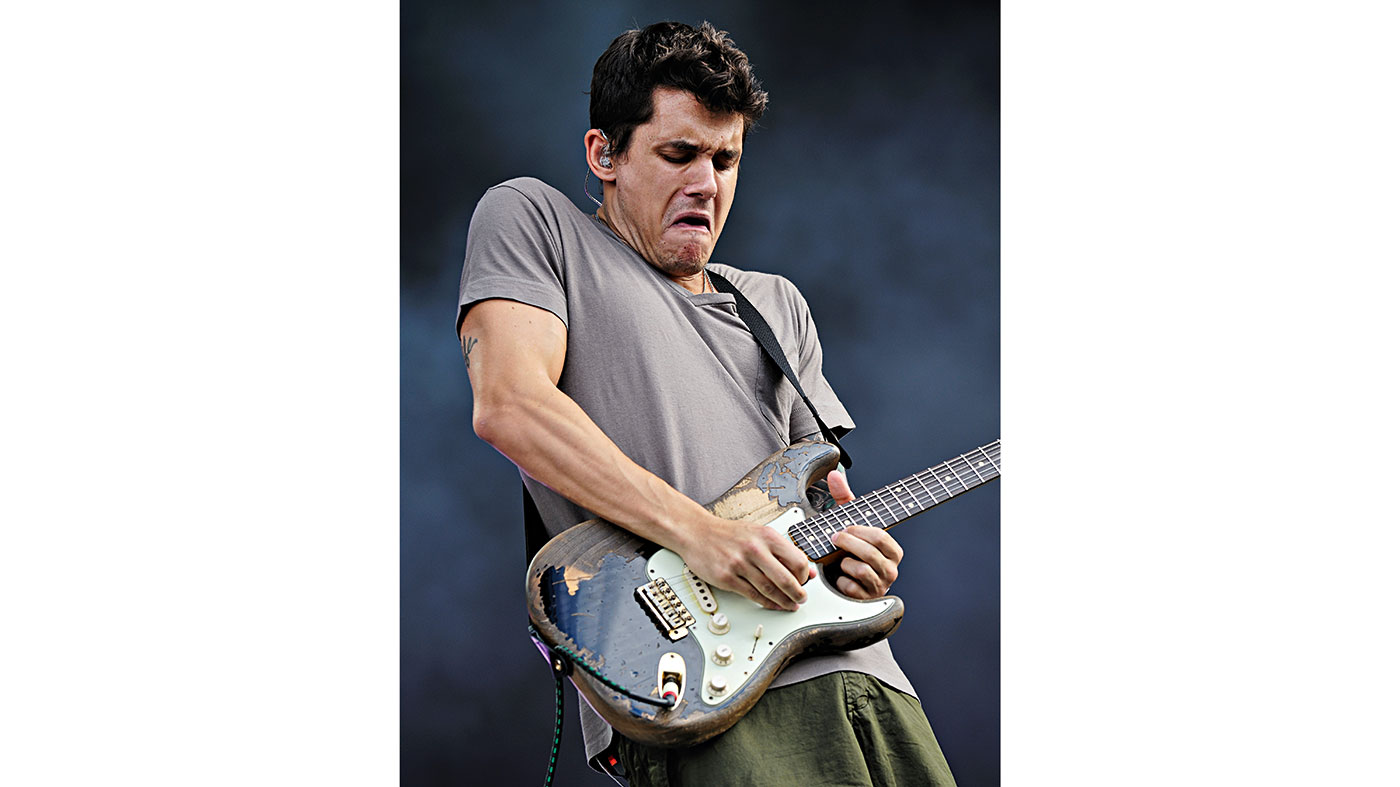
A 21st century guitarist who can truly claim to be a pop, funk, rock and blues great. Does John Mayer have it all?
If you’re going to talk about 21st century guitar megastars then you’re going to be in somewhat rarefied air. Sure, you can argue a case for Dave Grohl, Matt Bellamy - even Ed Sheeran - yet none of these players can be held up as an exemplar of feel, melody and technique quite like the stadium-filling genre blending guitarist John Mayer.
A master of blues, funk, pop, you name it, John Mayer’s even gigged Van Halen’s Panama, so he has the requisite rock guitar hero chops, too. We are, of course, looking at the melodic side of the reluctant blues-rocker, taking in his ballad lead style in songs like Gravity, as well as his funkier side.
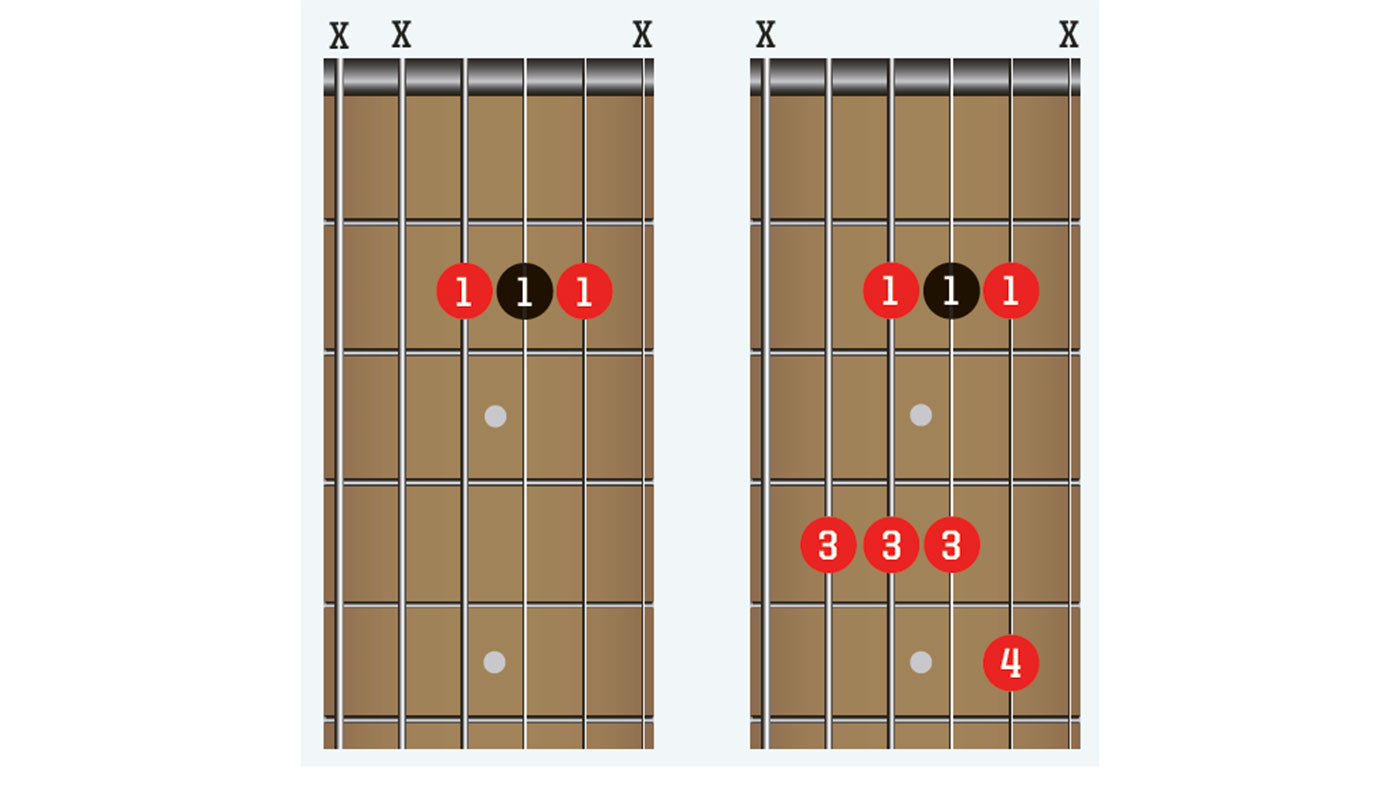
Top Jimi…
This simple chord trick has been used buy countless greats - Mayer and Hendrix are two of the best known. Play the first-finger barre chord shown above. This leaves you free to embellish with some extra notes, which you can play with your third and fourth fingers. Hammer-ons and pull-offs will sound great.
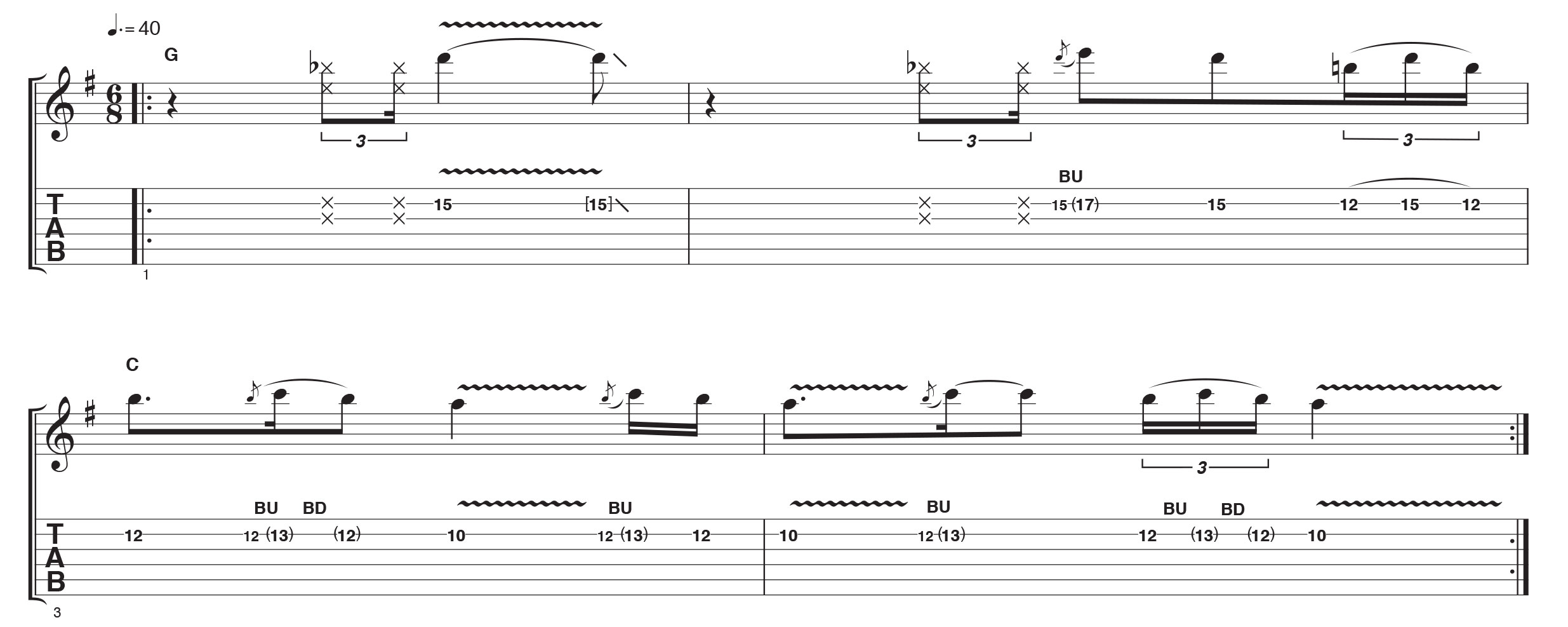
Lay back and leave space
To achieve the laid-back ballad style approach of songs like Gravity, you need to be comfortable leaving space in your solos. For example, rather than starting on the first downbeat, our lick waits a while before getting started. After playing just one note, we wait again before building on the note. The ending uses just three notes.

Funk, blues and pop lick
Here we’re getting funkier, but John’s genius is how he can play a lick like this in blues, rock and pop styles too. Part of what makes this happen is the G7 chord; both major and minor pentatonic scales sound good over this type of chord, which makes it easy to improvise over and versatile enough to create mix of different moods.
Total Guitar is Europe's best-selling guitar magazine.
Every month we feature interviews with the biggest names and hottest new acts in guitar land, plus Guest Lessons from the stars.
Finally, our Rocked & Rated section is the place to go for reviews, round-ups and help setting up your guitars and gear.
Subscribe: http://bit.ly/totalguitar










